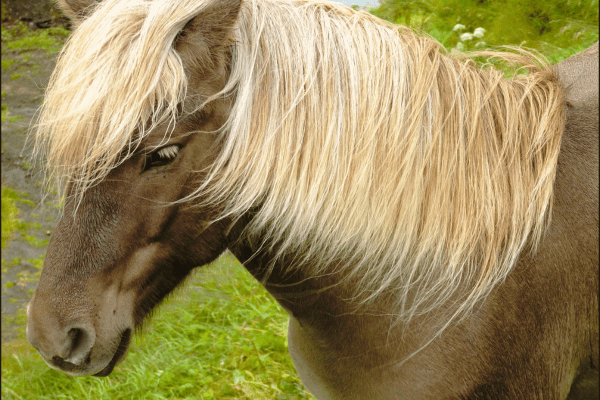The Faroe Pony, an equine breed of modest size yet exceptional strength, originates from the Faroe Islands. Its stature classifies it as a pony, but its notable physical power earns it the respect typically accorded to larger horses within the Faroese community.
Characterized by its resilient and approachable nature, the Faroe Pony stands as an exemplary choice for young riders in the Islands, providing a safe and enjoyable introduction to the art of horseback riding.
History:
The Faroe Pony has an intricate past woven through with cultural and environmental fabric of Faroe Islands. Dating back to 17th century, this breed provides a vivid glimpse into Faroese life today and in the past.
Early Records and Utility
Historical Documentation: The Faroe Pony first appears in written sources as early as 1600s, attesting to their longstanding presence on the Faroe Islands.
Role in Farming and Herding: These ponies traditionally played an indispensable part in Faroese agriculture, from carrying heavy loads on farms to special training to herd sheep (‘tokuhestar). Their versatility and intelligence were showcased through these roles.
Faroe Ponies thrived outside of labor as semi-feral animals that roamed freely through the mountains when not employed as labor. This proved both hardy and part of their deep integration into nature on these remote islands.
Decline and Near Extinction
19th Century Prosperity: By 1880, Faroe Ponies had amassed an impressive population on their respective islands – more than 800 animals could be documented at this point in time, marking their historical prominence and dominance.
20th Century Declin: At the turn of the 20th century, their fortunes took an abrupt turn for the worse. Due to widespread exportation between 1850 and 1920 of Faroe Ponies for use as pit ponies in British mining operations, there was an alarming decrease in population size.
As exportation increased, its impacts became alarmingly evident, with pony numbers drastically declining to only five or six. This drastic reduction posed a grave threat to their survival as breeds.
Conservation and Revival Efforts:
Leivur T. Hansen’s Initiative: Recognizing the dire state of his breed, Leivur T. Hansen initiated a conservation and breeding program which proved instrumental in turning around its decline.
Establishment of Felagid Foroysk Ross: In 1978, this organization dedicated to the preservation and breeding of Faroe Ponies was created, representing an important step towards formalizing revival efforts for this breed.
Population Recovery: By 2015, these efforts had paid off, as the pony population had recovered to 70 genetically pure animals – an impressive feat given that this breed was close to becoming extinct only decades prior.
Current Status and Future Prospects:
Recognition as an Exclusive Breed: Today, the Faroe Pony is widely celebrated as an original and distinguished breed, embodying its homeland’s resilience and spirit.
Challenges and Strategies: Despite being successful in increasing their numbers, issues related to low population remain. Strategies like controlled export are being explored as means of improving genetic diversity and safeguarding the breed’s future.
Ongoing Development and Preservation: Work continues on maintaining and developing the Faroe Pony with an aim of protecting their unique traits, while assuring its survival for future generations.
Physical Characteristics:
The Faroe Pony is a compact yet sturdy equine species, typically standing 11.2 to 12.2 hands (45 to 49 inches). Their colors include dun, black, bay and chestnut; with mealy markings around their muzzle and eyes.
Their thick double coat includes an undercoat to keep out cold temperatures of their native islands.


Temperament:
Ponies are known for their gentle and friendly disposition. Highly intelligent with an admirable work ethic, these ponies make excellent companions for both children and adults alike.
Additionally, their hardiness and ability to traverse rough terrain make them suitable for various equestrian activities.
Conservation Efforts:
Once on the brink of extinction, the Faroe Pony has now become the focus of sustained conservation efforts by both government officials and private breeders in Faroese waters.
Not simply an animal; rather it embodies Faroese culture while embodying resilience and beauty as part of Faroese heritage.
Cultural Impact:
The Faroe Pony is more than a breed; it represents the spirit and history of its home country of Faroe Islands. They play a central role in local folklore, festivals, and cultural events where ownership or breeding of this breed is celebrated with pride by local residents whose deep connection to both history and nature shines through with every breed owned or bred in Faroese society.
Faroe Ponies have long been recognized as an inspiring story of survival, adaptability and an unbreakable bond between humans and horses. Representing their islands of origin – Faroe Islands – these horses continue to capture hearts worldwide as an unrivalled reminder of nature’s resilience.


